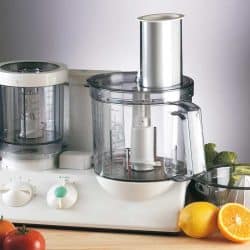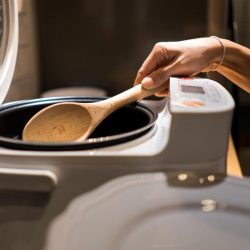Are the blades in your pasta machine running dull? Is your pasta machine 5-10 years old? Are you just wanting to learn more about the kitchen appliances you have? You've come to the right place! We researched the best way to sharpen your pasta maker so you can get back in the kitchen!
It's best not to sharpen the delicate blades of a pasta machine on your own. If the blades become very dull, you should send them back to the manufacturer for a professional sharpening. However, cleaning the blades at home can make your pasta machine sharper and more effective. You can try cleaning the machine at home before sending it to be sharpened. Here are the five steps to the cleaning process -
- Familiarize yourself with the type of pasta machine you own by reading the user manual.
- Clear the area that you're working in.
- Disassemble your pasta maker.
- Use a small brush to clean each part and make sure to properly dry metal parts to avoid rust.
- Apply a dab of Vaseline or mineral oil onto a clean cloth and wipe down the blades.
Since each pasta machine is different in their own ways, our simple 5-step guide will need some further elaboration to ensure the best possible results - keep reading for the details!
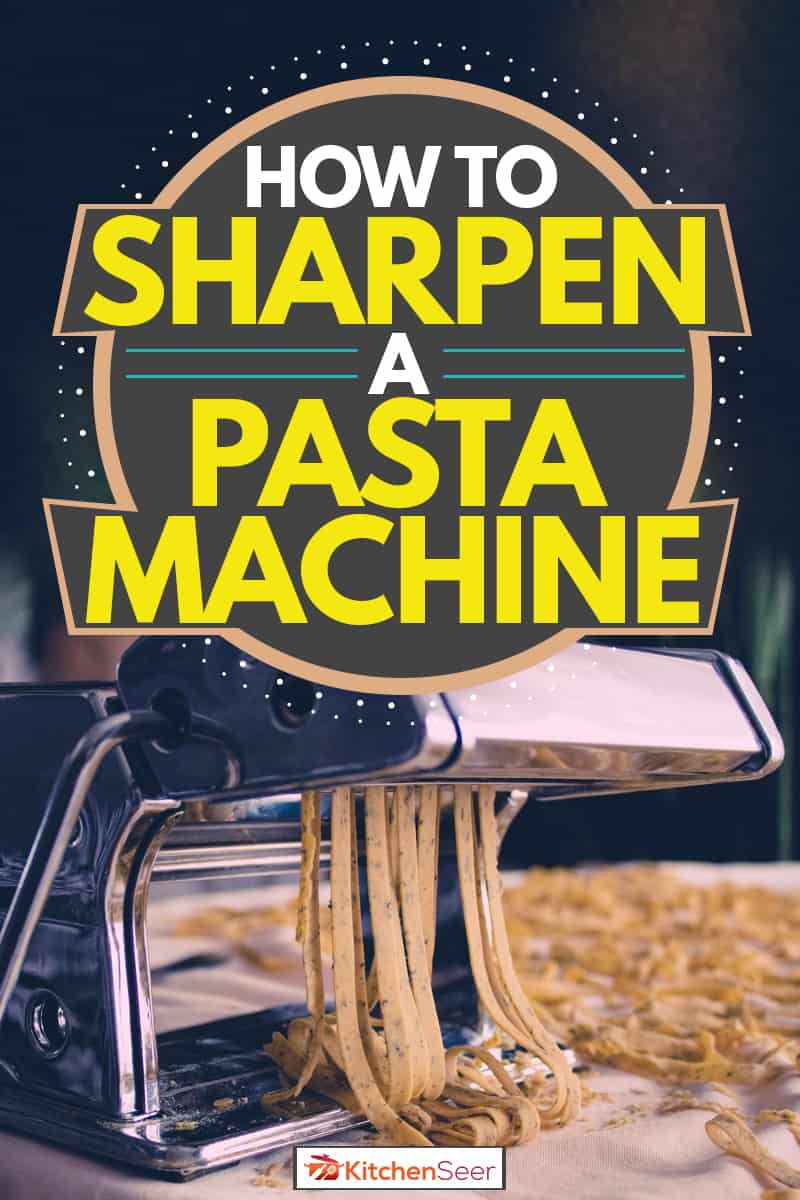
How to Sharpen a Pasta Machine
Pasta machines are delicate and sharpening their blades is a job for the professionals. Fortunately, the company can put in the work for you!
In our article 5 Best Pasta Machine Brands You Should be Looking Into, most of the listed brands show that they provide warranties on servicing and maintenance. Check it out to see if your appliance is one of them!
Some companies will require you to pay a small shipping fee to send your product back for maintenance. The price can often be similar to replacement blades you can purchase online. However, by using your warranty, you wouldn't have to install or repair anything on your own.
How to properly clean your pasta machine
Most people never have to sharpen the blades of a pasta machine. In most cases, a good cleanup can restore your machine's ability to produce thin layers of quality pasta dough. If you think your blades are too dull, try cleaning the machine first and see if that helps.
Step 1 - Read The Owner's Manual
Reading the instructional manual that your pasta machine came with is a great help! It will go into the specifics of disassembly, care, and operation. These booklets can seem lengthy and tedious to read, but the table of contents near the front should guide you. If you already know how to disassemble and operate your appliance efficiently, you can skip directly to the care or maintenance section.
Don't worry if the manual has been misplaced; the brand's website will often have a downloadable PDF version. For example, the most popular brand Marcato has provided a full guide for all of its products here.
Step 2 - Clear The Countertops
Check that you have the proper amount of space required for disassembly. Make sure that all items are removed from your workspace or at a safe distance. To keep things feeling more organized, lay down a lint-free cloth to set your items and tools upon.
Step 3 - Break It Down (Without Breaking It)
To best explain taking apart the pasta machine, check out this video tutorial below.
Please note - in the video, he is using a toothbrush with soap and water. As advised before, if possible, replace the soap and water for something like Vaseline or mineral oil.
If you own a pasta machine that is small, non-motorized or doesn't come apart, then using a paintbrush to wipe away bits of food and spreading your oil is a great alternative option.
Step 4 - Cleaning And Oiling
After separating and thoroughly cleaning the base and attachments, the oils can help to sharpen too! Specifically, curated oils for the material your machine is made of is recommended. Searching for the right one can feel like you're in a maze of all the different types. That's why we've found the best oils for each kind.

 Are You Working With Stainless Steel?
Are You Working With Stainless Steel?
Click here for Kershaw Knife Oil on Amazon.
Are You Working With Carbon Steel?
Click here for Citadel Black Knife Oil on Amazon.
For Working With Plastic Insert Blades, And Both Metals Above.
Click here for Food Grade Mineral Oil Spray on Amazon.
Brush Before and After
Whether it is with a small toothbrush, a paintbrush, or one built for getting into the crevices of a pasta machine brush before and after you clean the appliance. Brushing before wiping it down with a clean cloth and oil will allow you to get the dried dough residue off the metal.
While brushing after you've applied some form of lubricant will ensure that it is evenly spread into each nook and cranny. Afterward, wipe any excess oil away from flat surfaces on the pasta machine with a lint-free absorbent cloth.
Once you've finished brushing the oil, watching ">this video may help you with your reassembly process!
That was quite an information bomb. Well, one more thing! Even after wiping away excess oil, you may not want mineral oil from the creases of the machine getting all over your strands of pasta (even though our selected items are all food safe and non-toxic). So, it's best to run a medium-sized batch of extra dough through the machine, and toss that batch before you start to make the pasta you intend on serving.
What is the Thickest Setting On a Pasta Machine?
Depending on the brand, either the right or left side of your machine will have a knob that with numbers indicating how thick you want your pasta to be. Most of these settings are pretty universal, regardless of brand or style. The thickest setting is usually nine or ten, but some of them will only go up to seven.
We found an easy-to-read thickness comparison chart between three different brands. The best part about this chart is that it provides the exact millimeter measurements for each thickness setting. See below.
How to Know if Pasta Cutter is Misaligned? [Electric & Manual Machines]
A pasta cutter that appears to be not working as well as it once did, or not even fully separating the pasta may not have blades that are growing dull. The blades or rollers could merely be misaligned. Thankfully this is typically a quick fix!
For both electric and manual machines, there is a straightforward way of figuring out if they're misaligned.
First, you'll need to follow the instructions of the disassembly video from earlier until you get to where the gears are again visible. The appearance of the gears usually is what determines how aligned the appliance is.
Secondly, inspect the gears and their position to one another closely. If the bolts look too close together, loosen the nuts on the machine, and if they are too far apart, tighten them.
Do You Feel Like a Kitchen Mechanic Now?
You should, after making it to the end of our guide! After completing the steps above, you will surely be prepared to cut linguini, fettuccini, ravioli, or even polymer clay for you artists out there! If you liked this article, you might also like these other ones!
Can You Put a Pasta Maker in the Dishwasher?
Is Making Pasta Cheaper Than Buying? [Detailed Costs Revealed]




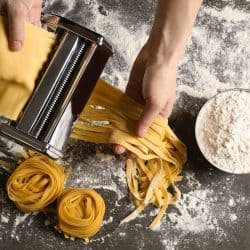
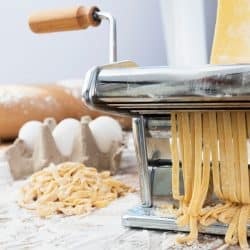

![A man making pasta using a pasta slicer, Is Making Pasta Cheaper Than Buying? [Detailed Costs Revealed]](https://kitchenseer.com/wp-content/uploads/2020/08/A-man-making-pasta-using-a-pasta-slicer-250x250.jpg)
